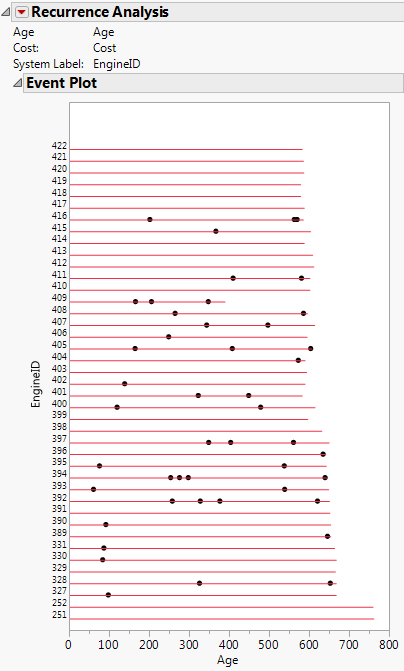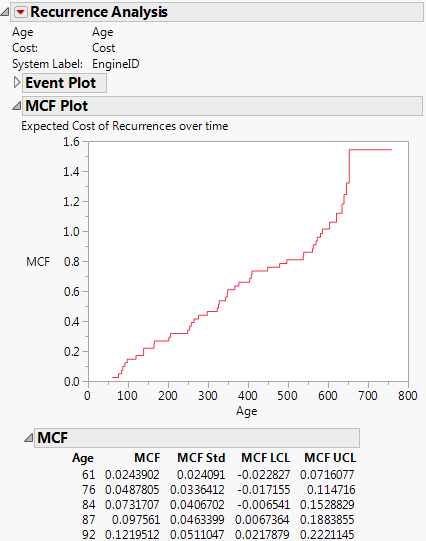Example of the Recurrence Analysis Platform
A typical unit in recurrent event data might be a component of an engine or appliance. In this example, you want to analyze records of valve seat replacements in locomotive engines. An engine can have multiple rows corresponding to multiple repairs at different ages and costs. The last observed age of a locomotive is indicated with a row that has a cost value of 0. For more information about this example, see Meeker and Escobar (1998, p. 395) and Nelson (2003).
1. Select Help > Sample Data Folder and open Reliability/Engine Valve Seat.jmp.
2. Select Analyze > Reliability and Survival > Recurrence Analysis.
3. Select Age and click Y, Age, Event Timestamp.
Age is the time in days from the beginning of service to the replacement of the engine valve seat.
4. Select EngineID and click Label, System ID.
The EngineID column identifies a specific locomotive unit.
5. Select Cost and click Cost.
6. Click OK.
Figure 6.2 Event Plot for Valve Seat Replacements
The event plot in Figure 6.2 shows a time line for each unit. There are markers at each time of repair, and each line extends to that unit’s last observed age. For example, unit 409 was last observed at 389 days and had three valve replacements.
Figure 6.3 MCF Plot and Partial Table for Recurrence Analysis
The MCF plot in Figure 6.3 shows the sample mean cumulative function. For each age, this is the nonparametric estimate of the mean cumulative cost or number of events per unit. This function goes up as the units get older and total costs grow. The MCF plot shows that about 580 days is the age that averages one repair event.

